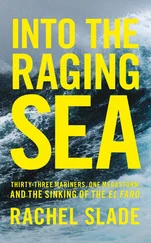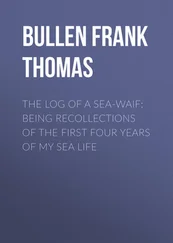In the aftermath, Puerto Ricans found themselves without fresh food, water, and electricity. Hospitals, schools, homes, and factories went dark. Some towns were completely wiped out. Tankers were unable to dock or unload; without fuel, emergency efforts ground to a halt. By mid-October, more than 1.2 million people on the island lacked access to potable water.
HURRICANE JOAQUIN FORECAST/ADVISORY NUMBER 13: 0300 UTC THU OCT 01 2015: HURRICANE CENTER LOCATED NEAR 23.8N 73.1W AT 01/0300Z. PRESENT MOVEMENT TOWARD THE SOUTHWEST AT 5 KT. MAX SUSTAINED WINDS 100 KT WITH GUSTS TO 120 KT.
Joaquin would continue this superheated superstorm trend with its own series of unprecedented stats. As it was forming, it traveled westward, but a ridge of high pressure blocked its forward progression, redirecting it south over the hot Bahamian waters—about 86 degrees—two degrees hotter than ever recorded at that time of year. This was the heat Joaquin needed to thrive. For sixty hours, the storm fed off these warm waters and rapidly intensified. At 2 a.m. on September 30, about 170 miles east-northeast of the small Bahamian island of San Salvador, Joaquin became a hurricane.
Mariners live and die by weather. Naturally, they are obsessed with forecasts, signs, and augurs. Long after a seaman has turned his back on the ocean, he follows the weather. He might live in landlocked New Mexico, four hundred miles from the nearest boat, but he’ll still be able to tell you all about the system forming off the coast of the Bahamas.
At home in Portland, Maine, on September 29, 2015, El Faro ’s off-duty Second Mate Charlie Baird couldn’t pull himself away from the Weather Channel. He’d just stepped off El Faro a week before, relieved by Second Mate Danielle Randolph. The pair had been tag-teaming the job for a couple of years, seventy days on, seventy days off. Now he was on his sofa, still in his robe at ten o’clock in the morning. He didn’t like what he was seeing, this storm developing in the Atlantic. He was off the clock, but he couldn’t help himself.
He picked up his phone and texted El Faro ’s captain, Michael Davidson: “Storm forming north of the bahamas!!”
Growing up in Portland, Charlie loved the water, loved sailing, loved the sea. In high school, he was a state-champion swimmer, breaking record after record, and got recruited to swim at Niagara College. At sixty-six, he’s still remarkably fit, and still competing in triathlons. A handful of medals hang from the chandelier in his dining room.
Charlie joined the merchant marine in the early ’80s. He’s been shipping so long that, like many mariners, he’s missed a lot of life while at sea. Like someone who’s spent a few years in a coma, he’s kind of disconnected. A lot of casual conversation doesn’t make sense to him—movies, music, and events have simply passed him by. He would make a terrible Trivial Pursuit partner.
Charlie lets this all wash over him as he swigs another glass of red wine on ice.
He knew not to mess with hurricanes. First, there are the winds. At low speeds, the wind’s force on a large ship is minimal. That is, up to about 35 miles per hour. Wind speed and force have an exponential relationship, meaning that as the wind notches up, its force doubles, then triples, and then quadruples, and so on. It’s based on a simple formula: wind pressure per square foot = 0.00256 x (wind speed) 2. Put another way, between 1 mile per hour and 35 miles per hour, the wind’s force against the boat runs roughly six to nine times its velocity. That’s the kind of incremental change that the human brain can handle. But over the next 35 miles per hour, its force rapidly grows to eighteen times its velocity. At 112 miles per hour, the wind’s force is thirty times its velocity—you can’t stand upright in that kind of wind no matter how far you lean; first you’ll slide across the ground, then you’ll get thrown backward into an uncontrollable somersault.
This power makes a big difference when you’ve got a crosswind across a large surface area, say, like the side of a container ship piled with boxes. At midspeeds, the wind’s force would be equivalent to twenty-one tons pushing up against that ship. You’ll heel a bit, and might want to shift your ballast to try to correct. Ratchet up the wind’s velocity to 110 miles per hour, and you’ve got about 375 tons trying to push the ship over. That’s the cumulative force of three of the world’s largest locomotives. If you’ve got vulnerabilities, like a low deck with lots of openings, that kind of force can be catastrophic.
And then there are the waves. At first, the cyclone’s high winds cause whitecaps to form on the water’s surface. As the hours pass, the waves grow. Start with a completely calm sea at noon on Monday; a 28-mile-per-hour wind starts to blow and by 11 p.m. on Tuesday, you’ll have thirteen-foot waves. A rough guide for wind to wave height is two to one—60-mile-per-hour winds (52 knots) stir up thirty-plus-foot waves, depending on fetch, or the length of open water over which the wind blows.
Of course, most mariners hope they’re never caught in seas like that, especially in a small boat.
How big can ocean waves get? For millennia, sailors spun stories about extreme waves a hundred feet high that came out of nowhere and smashed apart boats with just one hit. These were dismissed as salty tales, like mermaids and sea monsters. Even in the modern era, scientists considered freak waves a physical impossibility, in spite of compelling evidence to the contrary. During World War II, a rogue wave nearly sunk the Queen Mary ocean liner. The thousand-foot-long luxury passenger ship had been stripped down to carry American troops to Europe, and in December 1942, it was loaded with more than sixteen thousand American soldiers when a ninety-foot-high wave smacked her broadside, causing the ship to roll 52 degrees. There were plenty of witnesses to vouch for that one.
It wasn’t until modern equipment began recording rogue waves that scientists finally acknowledged their existence. On January 1, 1995, a laser aboard an oil rig in the North Sea recorded an eighty-four-foot-high wave. Since then sea buoys, satellites, mariners, and passengers have recorded these waves, confirming that indeed, they’re no myth.
Twenty-two minutes after Charlie texted him about Joaquin, Davidson texted back: “yup . . . thx for the heads up.”
Charlie sat on that sofa all day, watching the weather.
Monitoring the storm was the second mate’s job.
Danielle should’ve been obsessing about it just like him.
Charlie knew she wasn’t. He was fond of his fellow Mainer, a perky, freckled redhead half his age. He’d taken her under his wing like a little sister a decade ago when she joined the company while a cadet at Maine Maritime Academy. Back then, she was all energy, but ten years of shipping was wearing her down. Danielle recently found out she’d been passed over for a promotion to the new LNG ships. That killed what was left of her enthusiasm for her shipping career, and now he thought she was clocking in, clocking out.
Basic tasks seemed to elude her, like correctly plotting the ship’s location during her watch. She didn’t actively seek extra work to keep things running smoothly on the decrepit ship. Why bother? TOTE had kicked her to the curb after she’d sacrificed so much of her life to this career. Danielle started taking over-the-counter meds to fall asleep during her breaks and slamming caffeine to stay awake during her watch. These days, she went unusually quiet when her closest friends in Maine asked her about her life at sea.
And there was more. As Charlie was preparing to leave the ship to go home this last time, Danielle pulled him into her cabin and told him something about Captain Davidson he didn’t want to hear.
Читать дальше












